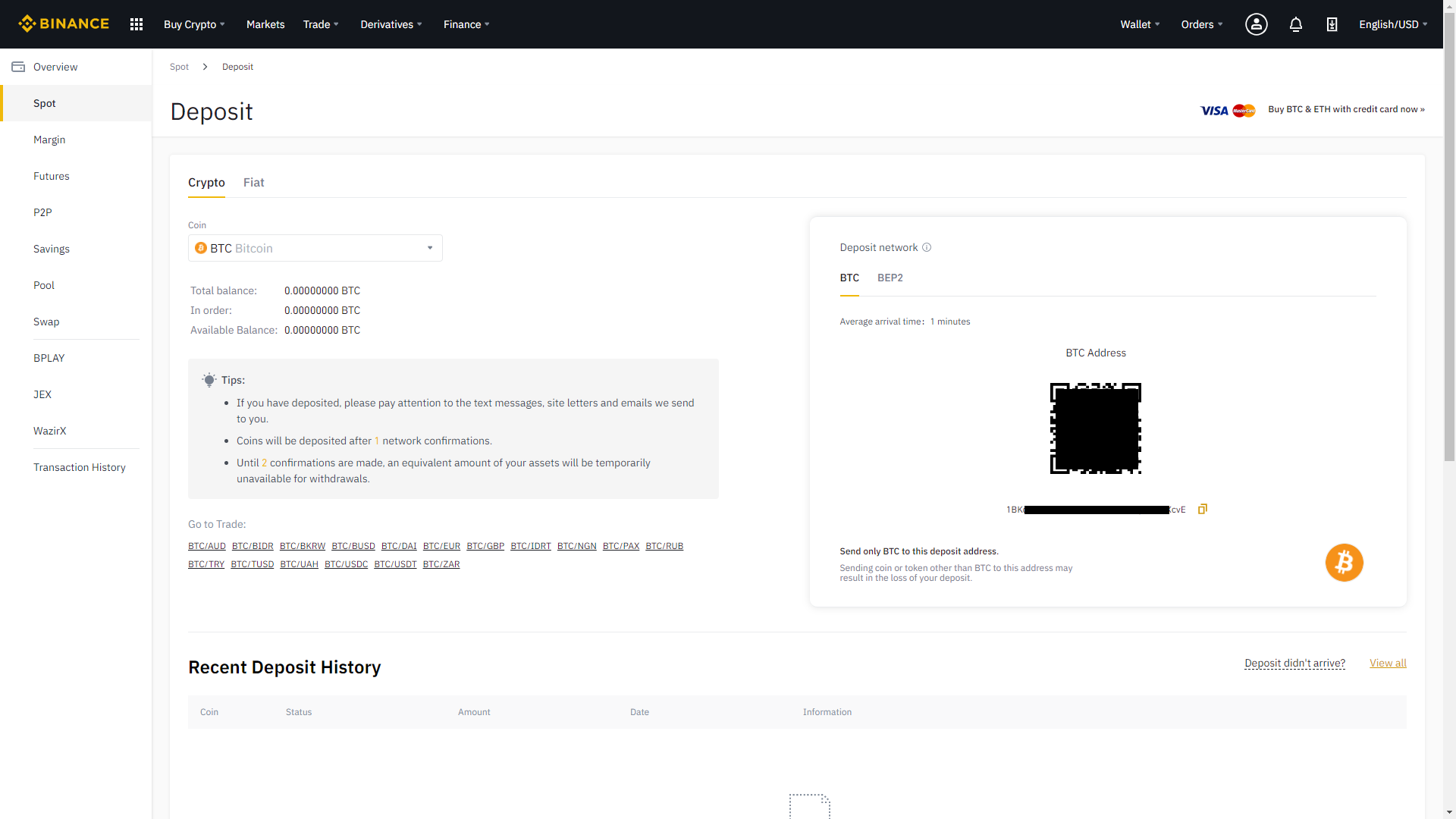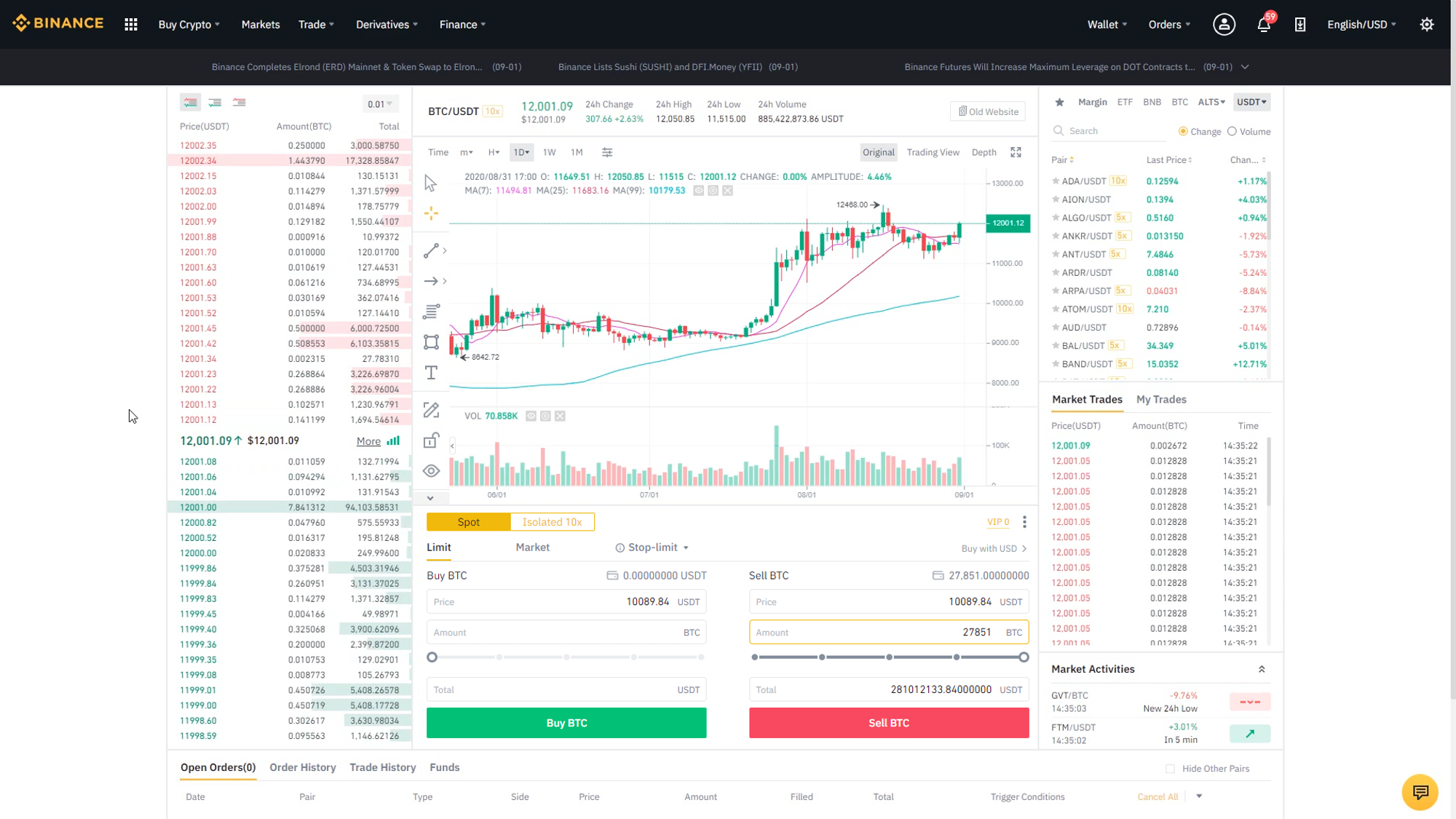How to Trade Cryptocurrency On Binance
Binance is widely regarded as the most popular cryptocurrency exchange in the world. With 24-hour trading volume that has been known to top $10 billion dollars, it’s no wonder that Binance has attracted international attention.
The smooth interface, fast order execution engine, and abundant selection of assets make it an appealing trading platform for every crypto trader.
If you are one of the many traders that have been convinced to join Binance, but don’t know where to begin, this article will help you get started. We will dig into the weeds of how to deposit funds into Binance, execute your first trade, and withdraw cryptocurrency from the exchange.
Don’t forget to sign up with Shrimpy to maximize the potential of your portfolio.
Binance Review
It’s tempting to say that Binance needs no introduction, but then again, it wouldn’t hurt to refresh yourself…
Those readers who already trade with Binance, sign up for a Shrimpy account to begin automating your trading strategy. It only takes 5 minutes to set up and can boost returns over a simple buy and hold strategy by over 305%!
Register
Figure 1: Sign up with Binance.
Before we can dive into the endless trading opportunities awaiting us on Binance, we must first sign up for an account with the exchange.
Binance has a streamlined experience that provides traders the opportunity to quickly sign up and start trading within in minutes.
Most investors located outside the United States will be able to register, fund an account, and execute their first trade in less than 15 minutes.
Unfortunately for US customers, the main binance.com website is no longer accepting customers from the United States. Instead, US customers should use the new binance.us website.
Binance.us is affiliated with the core Binance exchange, but it offers fewer assets and trading features to abide by US law.
Enter email verification code
Figure 2: Enter the verification code that Binance sends to your email account.
Once we have entered our account information, Binance will send us an email with a one-time account verification code. To get into our account for the first time, we must enter this code into the boxes that are presented on the page.
In this tutorial, we won’t cover how to set up a multi-factor authentication device, but we highly recommend that everyone who creates an account should immediately set up MFA on their account to further secure their funds.
Select to deposit crypto
Figure 3: Select to deposit cryptocurrency into the exchange account.
For the sake of this guide, let’s assume we already own cryptocurrency that can be deposited into the exchange. In that case, we can select the option for “Deposit Crypto”.
If this was our first time purchasing cryptocurrency, we would need to use the “Deposit Cash” option. This would take us through the process of sending money to the exchange. With the money we deposit, Binance would allow us to trade from fiat currencies into cryptocurrencies. Binance currently offers a wide range of fiat funding options including credit card, debit card, and wire transfer.
Deposit funds
Figure 4: Select a cryptocurrency to deposit and send funds to the exchange account.
Once we have selected the cryptocurrency we would like to deposit in the “Coin” drop-down on the left side of our screen, we will see a QR code and an address presented under the “Deposit network” heading.
Using a mobile cryptocurrency wallet and scanning the QR code will send the funds to our account the same way as entering the deposit address into a hardware or desktop wallet. Either of these two options can be used to deposit funds into our Binance exchange account.
However we decide to send the funds, we must remember to double and triple check the address when sending funds. The deposit address should match the cryptocurrency we are depositing and every letter or number must be exactly correct. If we make a mistake, the funds may get lost forever.
Reminder: The deposit address is specific to each exchange account. Entering a deposit address for someone else’s exchange account will cause the funds to get sent to the other person’s account. Since blockchain transactions are irreversible, there would be no way to reverse the transaction.
View balances
Figure 5: View our balances.
Once we have deposited our funds, we can select the “Spot” wallet on the left navigation bar to see the funds that have been deposited.
We can also reach this page at any time by selecting the “Wallet” drop-down in the top navigation bar and selecting “Spot Wallet”.
Notice that it can take some time for funds to show up in a spot wallet on the exchange. Each blockchain has different transaction speeds, so it can take over 10 minutes to see the funds show up in the exchange after they are sent.
Limit order
Figure 6: Placing a limit order for a specific price and amount.
Now that the funds have been securely transferred to our exchange account, we can start trading! This is where the excitement starts.
To execute our first order, navigate to the “Trade” drop-down in the header and select “Classic”. The classic view is the most popular way to trade cryptocurrency on Binance.
On the Binance exchange, there are a few different options for order types that we can place with the exchange. The most popular two order types are limit orders and market orders.
Order Types
Limit orders and market orders are the most common orders present across cryptocurrency exchanges. Learn everything you need to know about these order types in this full guide.
A limit order requires two parts to the order: A price and an amount. The price tells the exchange at what price (or better) you are willing to buy or sell a cryptocurrency. The amount will tell the exchange how much of your funds you want to spend to buy or sell the cryptocurrency.
When executing a trade, first we should ensure we are viewing the correct cryptocurrency trading pair. Binance supports hundreds of different trading pairs that can be used to trade cryptocurrency. To find the trading pair we want to use, select one of the quote currencies in the top right corner where it says “BTC”, “ALTS”, and “USDT”. Once we have done that, we can view and select different trading pairs in the scroll box below those selections.
In this example, we have deposited our Bitcoin to the exchange, so we will focus on Bitcoin trading pairs. In particular, if we wanted to trade from Bitcoin to USDT, we will select the BTC/USDT trading pair.
Once the appropriate Bitcoin trading pair has been selected, we can enter our information for the trade and submit the order by selecting “Sell BTC”.
Market order
Figure 7: Placing a market order for a specific amount.
In contrast to limit orders, market orders only require an amount. That’s because a market order will automatically execute on the exchange at the current best price available. The best price is determined by the open orders that have been placed on the order book by other traders.
There are some nuances to how market orders are executed, so we recommend reading the full educational article on how to get started with cryptocurrency spot markets.
Spot Markets
A spot market is a place where buyers and sellers come together to exchange cryptocurrency…
For the sake of this tutorial, we will be using the market order functionality to sell the funds that we have deposited into the exchange.
Sell asset
Figure 8: Push “Sell BTC”.
It is time to make our first sell!
After we have carefully selected how much of our funds we would like to sell, enter the value into the “Amount” field and click “Sell XXX”. In this case, we are selling Bitcoin, but the interface will look the same no matter what cryptocurrency we are buying or selling.
Each asset trading pair on the exchange will have its own chart, order book data, and trading history. The provided data can help us decide when it’s time to buy or sell an asset.
Select the “Sell BTC” option when ready and feel the rush of instantly trading funds to a new asset.
Withdraw funds
Figure 9: Withdraw your funds.
Once we have traded for some time and decide to move our funds off the exchange, we can use a similar process to the one we used to deposit funds to the exchange in the first place.
To withdraw funds, start by navigating over to the “Wallet” drop-down and select “Spot Wallet”. This will load the current balances you have for each asset in your exchange account.
We can see in Figure 9 that we have traded everything to USDT, so we only have USDT in our account.
Let’s withdraw these funds!
Enter address
Figure 10: Withdraw funds from the exchange by entering the withdrawal address.
After selecting the asset we want to withdraw, we must enter the asset address to which we would like to withdraw. In this case, since we are withdrawing USDT, we will want to use a USDT address.
Similar to when we are depositing funds to the exchange, double and triple check the address. Mistyping the address can cause the funds to become permanently lost. There are no refunds or reversing transactions.
Note: USDT is available on different networks. Double check to make sure the correct transfer network is selected when withdrawing USDT.
Conclusions
That’s it!
The above steps are everything we need to get started trading on Binance. Depositing funds and making the first trade can be a life-changing moment.
After we have gotten comfortable with the idea of trading on a cryptocurrency exchange, we can move along to trading bots and other portfolio management tools.
Additional Good Reads
The Easy Arbitrage Crypto Trading Strategies
Cryptocurrency Trading Bots - The Complete Guide
Threshold Rebalancing for Crypto Portfolio Management
How to Read Crypto Candlestick Price Charts
Dollar Cost Averaging for Crypto Portfolios
About Us
Shrimpy is an account aggregating platform for cryptocurrency. It is designed for both professional and novice traders to come and learn about the growing crypto industry. Trade with ease, track your performance, and analyze the market. Shrimpy is the trusted platform for trading over $13B in digital assets.














